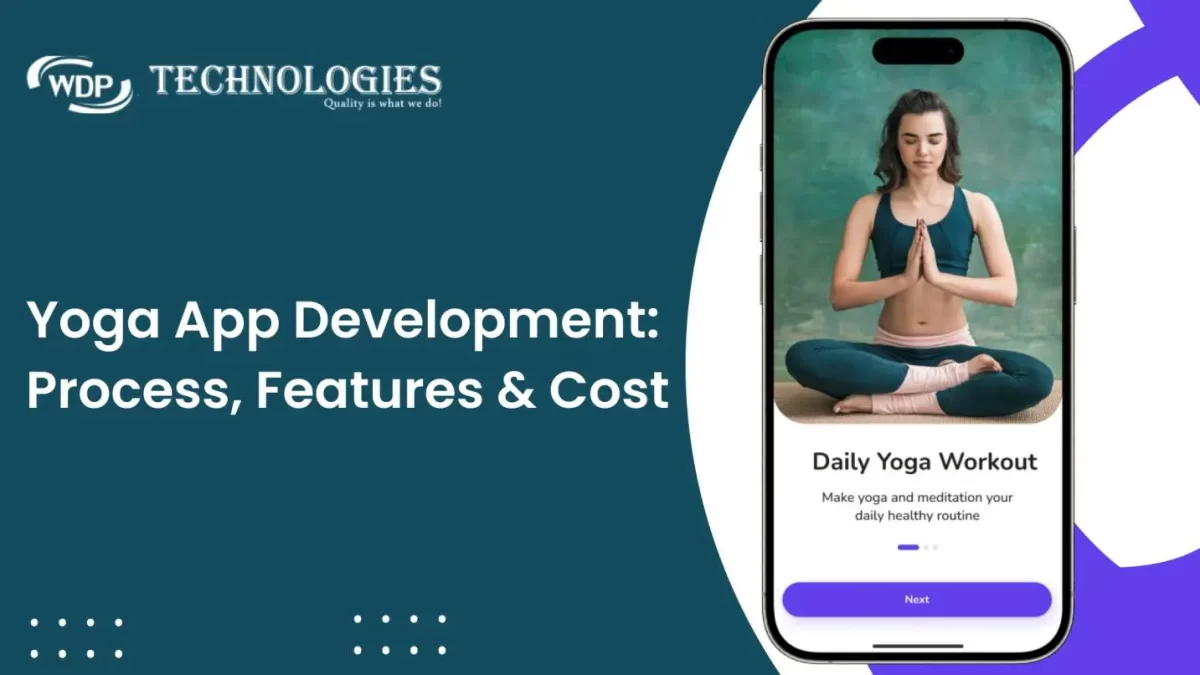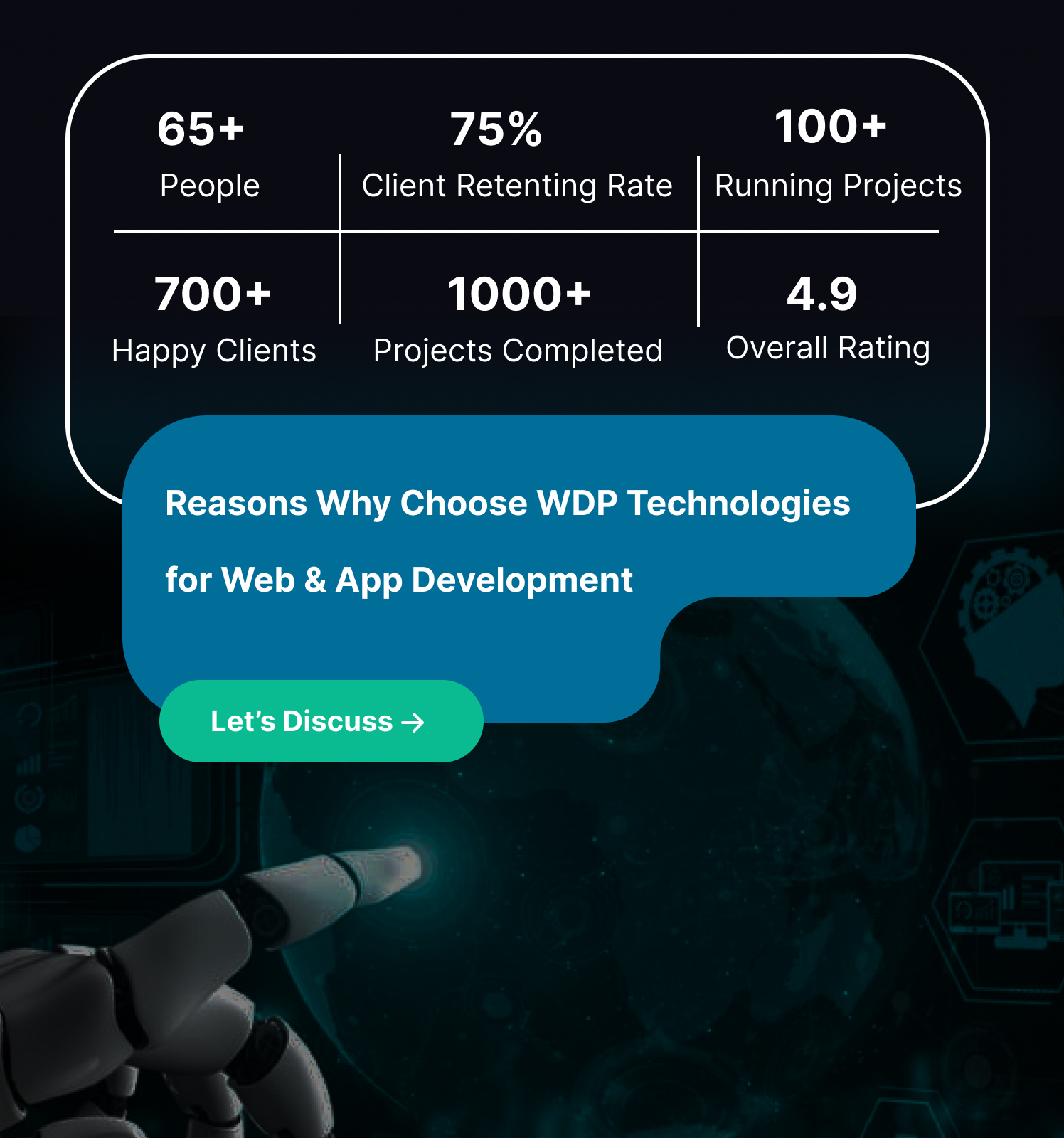The global yoga market is booming, with millions practicing yoga for its physical and mental benefits. With the increasing popularity of smartphones and the growing interest in health and wellness, developing a yoga app presents a promising opportunity to connect individuals with the transformative power of yoga.
Certainly! Yoga app development is a fascinating field, and creating a successful yoga app involves understanding the market, identifying the right features, and delivering a valuable experience to users.
The global yoga market is estimated at a staggering USD 107.1 billion in 2023, and is projected to grow at a healthy CAGR of 9.4% from 2024 to 2030. This indicates a continuously expanding market with a rising consumer base. Fitness App Market Boom: The overall fitness app market is flourishing as well, with a projected CAGR of 17.7% from 2024 to 2030, reaching a market size of USD 25.9 billion by 2033.
Why Investing in Yoga App Development Makes Perfect Sense
The flourishing yoga industry presents a compelling opportunity for investors and entrepreneurs. Here’s why yoga app development can be a smart move:
1. Booming Market:
Yoga’s popularity is undeniable. Millions worldwide are seeking its well-documented benefits for physical and mental well-being, creating a constantly growing market for yoga-related products and services.
2. Wider Audience Reach:
Yoga apps transcend geographical limitations. Unlike studio classes, they allow you to reach a global audience, giving you a vast potential user base.
3. Scalability & Low Overhead:
Mobile apps are inherently scalable. As your user base grows, you can easily add new features or content without significant additional resources. This translates to high profit margins.
4. Convenience & Accessibility:
Yoga apps cater to the modern desire for convenience. Users can practice yoga anytime, anywhere, fitting it seamlessly into their busy lives. This accessibility factor makes your app highly attractive.
5. Subscription-based Revenue:
Freemium models with premium content or tiered subscription plans are popular monetization strategies for yoga apps. This provides recurring revenue streams, making your investment sustainable.
6. Brand Building & Customer Loyalty:
A well-designed app positions you as a leader in the health and wellness space. By providing value and fostering a positive user experience, you can build brand loyalty and create a community around your app.
7. Competitive Differentiation:
The yoga app market is competitive, but there’s room for innovation. By identifying a specific niche or offering unique features, you can differentiate yourself from the crowd and attract a loyal following.
In summary, investing in yoga app development offers the opportunity to tap into a growing market, reach a wider audience, enhance accessibility and personalization, foster community engagement, and generate revenue. By leveraging the power of mobile technology to promote health, wellness, and mindfulness, developers can create a valuable platform that enriches the lives of users around the world.
Essential Feature For Yoga App Development
When you are in the phase of yoga app development, incorporating essential features is crucial to providing users with a comprehensive and engaging experience. Here are some key features to consider:
1. Pose Library:
This is the heart of your app. It should include a vast collection of yoga poses (asanas) with high-quality images and clear, concise instructions. Break down each pose with step-by-step explanations, proper alignment cues, and potential modifications for beginners or those with limitations.
2. Guided Yoga Classes:
Offer a library of guided yoga classes led by experienced instructors. Users should be able to browse through a variety of classes categorized by duration, difficulty level, style (e.g., Hatha, Vinyasa, Yin), and focus areas (e.g., flexibility, strength, relaxation).
3. Customizable Workouts:
Allow users to create personalized workout routines tailored to their preferences and fitness goals. Enable features for selecting specific poses, setting durations, adjusting difficulty levels, and saving favorite routines for easy access.
4. Video Demonstrations:
Provide high-quality video demonstrations of yoga poses, sequences, and flows. Clear, detailed instructions and proper alignment cues help users understand the correct technique and posture for each pose, reducing the risk of injury and enhancing the effectiveness of their practice.
5. Audio-Guided Sessions:
Offer audio-guided yoga sessions for users who prefer to practice without visual distractions. Clear and soothing voice instructions, accompanied by calming background music or ambient sounds, create a immersive experience that promotes relaxation and focus.
6. Progress Tracking:
Implement tools for users to track their progress and monitor their yoga journey. Features such as workout history, achievements, badges, and performance analytics provide valuable insights into users’ consistency, improvement, and achievements over time.
7. Offline Access:
Enable users to download yoga classes and content for offline access, allowing them to practice yoga anytime, anywhere, even without an internet connection. This feature is especially useful for users who travel frequently or have limited access to stable internet connectivity.
8. Community Interaction:
Foster a sense of community and connection among users by integrating social features such as forums, discussion boards, challenges, and user profiles. Encourage users to share experiences, ask questions, provide support, and participate in community events and challenges.
9. Notifications & Reminders:
Send timely notifications and reminders to encourage users to stay consistent with their yoga practice. Reminders for scheduled classes, personalized recommendations, achievement milestones, and upcoming events help users stay motivated and engaged.
10. Mindfulness & Meditation:
Include guided mindfulness and meditation sessions as part of the app’s offerings. Incorporating practices such as deep breathing exercises, mindfulness meditation, and relaxation techniques enhances the app’s holistic approach to well-being and stress management.
11. Accessibility Features:
Ensure that the app is accessible to users of all abilities by incorporating features such as adjustable font sizes, color contrast settings, voice commands, and compatibility with screen readers. Accessibility features enhance inclusivity and ensure that all users can participate in and benefit from the app’s offerings.
12. Progress Tracking:
A progress tracking system keeps users motivated. Allow users to track their completed sessions, yoga journeys, and milestones achieved. Consider integrating data from wearable devices for a more holistic picture.
Step By Step Process For Yoga App Development
Yoga app development involves several steps, from conceptualization to deployment. Here’s a comprehensive guide outlining the key steps in the yoga app development process:
1. Market Research & Analysis:
Market research is crucial to understand the dynamics of the yoga and wellness industry. Identify your target audience by demographics, interests, and pain points. Analyze competitors to understand their strengths, weaknesses, and market positioning. Explore market trends, such as emerging yoga practices, popular yoga styles, and technological advancements in the wellness sector.
2. Conceptualization & Planning:
During this phase, define the overarching purpose and objectives of your yoga app. Determine the unique value proposition that sets your app apart from competitors. Create a detailed plan outlining the features, functionalities, and user experience you intend to offer. Consider factors like user engagement, monetization strategies, and scalability to ensure long-term success.
3. Design Phase:
Develop wireframes and prototypes to visualize the layout and flow of your app. Design the user interface (UI) and user experience (UX) elements, ensuring intuitive navigation and ease of use. Pay attention to branding elements, such as logo design, color palette, typography, and visual assets, to establish a cohesive and appealing aesthetic.
4. Technical Development:
Choose the appropriate development tools and technologies based on your platform requirements (iOS, Android, or cross-platform). Build the frontend of the app using languages like Swift (for iOS) or Kotlin/Java (for Android). Develop the backend infrastructure, including servers, databases, and APIs, to support user authentication, content management, and data storage.
5. Content Creation:
Content creation is integral to providing value to users within your yoga app. Produce high-quality instructional materials, including video tutorials, audio recordings, written guides, and visual assets showcasing yoga poses, sequences, and meditation practices. Collaborate with experienced yoga instructors and content creators to ensure accuracy, clarity, and effectiveness.
6. Testing & Quality Assurance:
Conduct thorough testing of your app to identify and address any bugs, glitches, or usability issues. Perform functional testing to ensure all features work as intended. Conduct usability testing to assess the app’s user experience and navigation flow. Test the app across different devices, screen sizes, and operating systems to ensure compatibility and responsiveness.
7. Deployment to App Stores:
Prepare your app for release on the Apple App Store (for iOS) and Google Play Store (for Android). Ensure compliance with app store guidelines and requirements, including app metadata, privacy policies, and content restrictions. Create compelling app store listings with descriptive texts, screenshots, and promotional materials to attract users and encourage downloads.
8. Post-Launch Support & Maintenance:
Provide ongoing support and maintenance for your app post-launch. Monitor user feedback and app performance to identify areas for improvement and optimization. Release regular updates and bug fixes to address user-reported issues and enhance app functionality. Continuously iterate and refine your app based on user analytics, market trends, and emerging technologies to ensure its long-term success and relevance.
Technology Trends to Follow For Yoga App Development
Several technology trends can significantly impact the development of yoga apps, enhancing user experience, accessibility, and functionality. Here are some key trends to consider:
1. AI and ML:
Integrating AI and ML algorithms into yoga apps can personalize user experiences by analyzing user data, preferences, and performance. AI-powered features such as personalized workout recommendations, adaptive difficulty levels, and form correction can enhance user engagement and effectiveness. Use of AI in app development helps you to make your app extra ordinary.
2. AR and VR:
AR and VR technologies can offer immersive yoga experiences by creating virtual environments, instructor avatars, and interactive visualization of yoga poses. Users can practice yoga in simulated settings, receive real-time feedback on their form, and explore new yoga styles and environments from the comfort of their homes.
3. IoT & Wearable Devices:
Integrating yoga apps with IoT devices and wearable technologies, such as fitness trackers and smartwatches, can provide users with real-time insights into their yoga practice. Users can track their heart rate, breathing patterns, and movement metrics during yoga sessions, enabling them to monitor their progress and optimize their performance.
4. Blockchain Technology:
Blockchain technology can enhance security, privacy, and transparency in yoga apps by securely storing user data, verifying credentials of yoga instructors, and facilitating secure transactions for premium content and services. Blockchain-based features can also enable decentralized community interactions and incentivize user participation through token rewards and loyalty programs.
5. Voice Recognition & NPL:
Integrating voice recognition and NLP capabilities into yoga apps allows users to interact with the app through voice commands, enabling hands-free navigation and control. Users can access guided yoga sessions, meditation practices, and instructional content using natural language queries, enhancing accessibility and convenience.
6. Cloud Computing:
Leveraging cloud computing technologies can enhance scalability, reliability, and performance in yoga apps by offloading computational tasks, storing large multimedia content, and facilitating seamless synchronization across multiple devices. Cloud-based infrastructure enables users to access their yoga practice data and content from anywhere, anytime, and on any device.
7. Gamification & Social Features:
Incorporating gamification elements and social features into yoga apps can increase user engagement and motivation. Features such as achievement badges, progress tracking, leaderboards, challenges, and social sharing enable users to compete, collaborate, and interact with peers, fostering a sense of community and accountability.
Yoga App Development Cost in 2024
The cost for yoga app development in 2024 can vary significantly depending on several factors:
🔹App Complexity: Basic apps with core features like pose libraries and video tutorials will have a lower cost compared to feature-rich apps with functionalities like personalized recommendations, yoga challenges, and community features.
🔹Development Team Location: Developer rates vary depending on location. Hiring developers from regions like North America or Western Europe will generally cost more compared to hiring teams in Asia or Eastern Europe.
🔹In-house vs. Outsourced Development: Building an in-house development team requires significant upfront investment. Outsourcing development to a qualified app development company can be a more cost-effective option.
Here’s a general range for yoga app development costs in 2024:
- Basic Yoga App: $10,000 – $15,000
- Mid-Range Yoga App: $15,000 – $22,000
- Advanced Yoga App: $25,000+
Monetization Strategies For Yoga App
Each monetization strategy offers its unique advantages and considerations, and the most effective approach may vary depending on factors such as the target audience, market dynamics, and app objectives.
1. Subscription Model:
Implementing a subscription model involves offering users access to premium content and features in exchange for a recurring fee. This can include exclusive yoga classes led by renowned instructors, advanced analytics to track progress and performance, personalized coaching or feedback sessions, and access to special events or workshops. Subscriptions can be offered on a monthly, quarterly, or annual basis, providing users with continuous access to high-value content and services.
2. In-App Purchases:
In-app purchases allow users to buy individual classes, workshops, or premium content packages within the app. This model offers flexibility for users who may prefer to pay for specific content on a one-time basis rather than committing to a subscription. Users can choose from a variety of offerings, such as specialized yoga programs, meditation sessions, or advanced skill-building workshops, allowing them to tailor their yoga practice to their preferences and goals.
3. Advertising:
Partnering with relevant brands and advertisers to display targeted ads within the app can be a lucrative monetization strategy. Advertisements can be integrated into various parts of the app, such as during loading screens, between yoga sessions, or as banners within the interface. It’s essential to ensure that advertisements are non-intrusive and relevant to users’ interests to maintain a positive user experience. Ad revenue can be generated based on impressions, clicks, or conversions, depending on the advertising agreement.
4. Merchandise Sales:
Selling branded merchandise through the app’s storefront is another viable monetization strategy. This can include a range of yoga-related products such as yoga mats, clothing, accessories, wellness products, and digital downloads (e.g., guided meditation tracks, e-books). By offering high-quality merchandise that aligns with the app’s branding and user preferences, developers can capitalize on users’ affinity for the app and enhance their overall experience.
How Can WDP Technologies Help With Yoga App Development?
WDP Technologies specializes in providing comprehensive solutions for yoga app development, leveraging cutting-edge technologies and innovative strategies to create tailored experiences for users. With a team of experienced app developers, designers, and content creators, WDP Technologies can guide you through every step of the development process, from conceptualization and planning to deployment and post-launch support.
By understanding your unique vision and objectives, WDP Technologies can create a yoga app that aligns with your goals, resonates with your target audience, and delivers tangible value in the competitive wellness market. Whether you need assistance with technical development, content creation, or user experience design, WDP Technologies offers the expertise and resources to bring your vision to life and make your yoga app a success.
Conclusion
In conclusion, the yoga app development presents a unique opportunity to leverage technology to promote health, wellness, and mindfulness. By understanding the needs of your target audience, incorporating essential features, and prioritizing user experience, you can create a valuable platform that empowers individuals to embark on their journey towards holistic well-being.
With the right combination of technical expertise, creative vision, and strategic planning, your yoga app has the potential to make a meaningful impact on the lives of countless users around the world.














